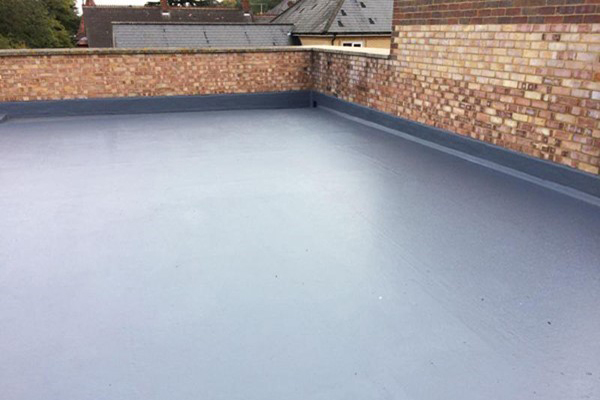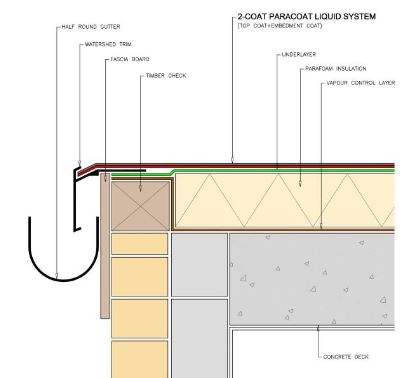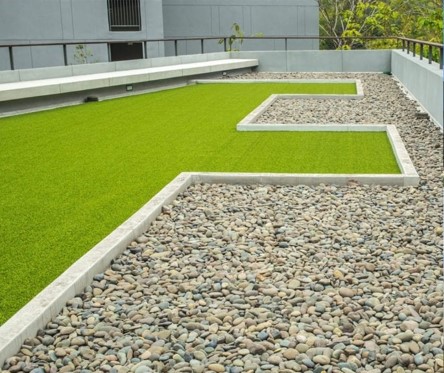
We can repair of replace your flat roof. Give us a call and we will visit you, inspect the roof, discuss the options with you and provide a free quote.
All our work is 100% guaranteed.
Repairs

Where possible we repair all types of flat roofs. Depending on the roof condition a repair may last a few years
Patch repair: Generally a patch repair is done on Felt, EPDM, Sarnafil and GRP fiberglass roofs
Liquid repair: Generally can be applied to nearly all roofs.
Flat roof options
With improvements in materials there are now many options available to you, here we list out a the most popular with the pros and cons.
Flat roofing materials
- Warm roofing
- GRP Fiberglass
- Felt / BUR (Built-up Roofing Membrane)
- Green Roofing
- Membranes EPDM Rubber / Sika Sarnafil
- Polyurethane Liquid Roofing
Warm Roofing
If your installing a new flat roof you may consider having a warm roof. There are 2 options for this. 1) Warm Deck and 2) Cold deck
Warm Deck – this is where the insulation is placed on top of the rafters/joists and the roof covering is then placed over the insulation. No ventilation is required for these types of roofs.. The type of insulation for this is usually of a rigid type and the thickness will vary depending on the manufacturer’s specifications. This is placed over the roof joists and a board (normally external ply) is laid on top. (Thickness varies according to the manufacturer’s specifications). The roof covering is then laid over the ply.
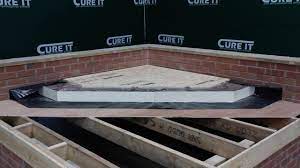
Pro’s and Con’s of a Warm roof? Pro’s – Easier to install, work is done above the deck, no thermal bridging, greater thermal insulation. Con’s Insulation is expensive, needs a greater roof height
Cold Deck – this is where the insulation is placed between the joists/rafters or in between the ceiling joists in the case of a pitch roof. Ventilation is required for these roofs. The thickness of insulation required will vary depending on the material you decide to use and the manufacturer’s specification. A ventilation gap, usually 50mm, should be provided between the top of the insulation and underside of the roof covering to allow the air to flow across. Ventilation openings (either at the eaves or upstand). A vapour membrane should be added to the underside of the insulation and tacked to the joists before applying the plasterboard.
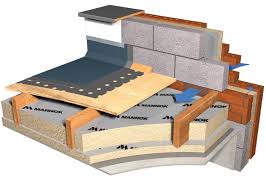
Pro’s and Con’s of a Cold roof? Pro’s – no increase in height, retro fit . Con’s Insulation is expensive, complicated construction, Increased probability of thermal bridging.
GRP Fiberglass
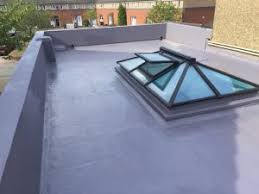
Invented in 1938 by Russel Games, Fibreglass or (GRP) Glass Reinforced Plastic was originally used in boat design and water storage facilities, but in recent years it has been developed into a lightweight and durable roofing material. GRP outperforms and outlasts any other flat roof material.
GRP is manufactured from a high quality polyester resin and hardened with chopped mat glass fibres to form a strong and durable laminate that is capable of being moulded into almost any shape. We have perfected the process of creating a fibreglass flat roofing system that is 100% waterproof and includes a 20 year guarantee.

Pro’s and Con’s of a GRP Fiberglass roof? Pro’s – Very durable, seamless can be moulded to any shape, easy to clean, easy to repair, long guarantee. . Con’s Very weather dependent for the install work, expensive.
Felt / BUR (Built-up Roofing Membrane)
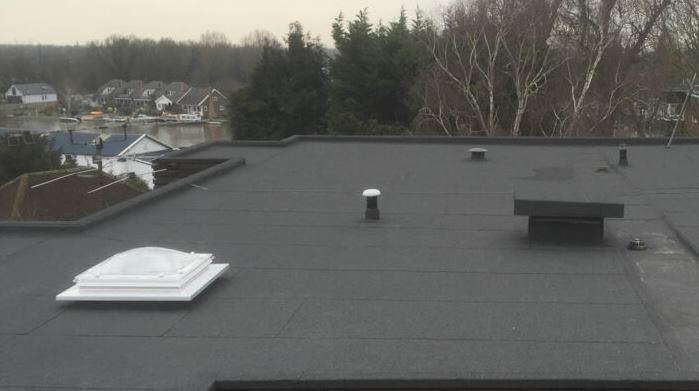
Fitted using a blowtorch, we install a 3 layer felt roof system . Each of the three layers is laid in a half-lap system, so any joint in the roof is as far away as possible from another joint. The 3 layer torch on felt roof system is durable. This system will serve you without issues for as long as 15 years. Felt roofing can be a good option for flat roofed buildings in a range of sectors . It is waterproof, weatherproof and cheap to install, replace as well as repair.
Pro’s and Con’s of a Felt roof? Pro’s – Cheapest of the roof coverings, suitable for many houses, easy to repair, lightweight, 10 to 20 year guarantee. Con’s Anti foot traffic, easy wear on the top layer, not for the DIY’er, difficult to maintain, repairs can look untidy.
Green Roofing

Green roofs serve several purposes for a building, such as absorbing rain water, providing insulation, creating a habitat for wildlife, increasing benevolence and decreasing stress of the people around the roof by providing a more aesthetically pleasing landscape, and helping to lower urban air temperatures and mitigate the heat island effect. Green roofs are suitable for retrofit or redevelopment projects as well as new buildings and can be installed on small garages or larger industrial, commercial and municipal buildings. They effectively use the natural functions of plants to filter water and treat air in urban and suburban landscapes.
There are two types of green roof: intensive roofs, which are thicker, with a minimum depth of 12.8 cm (5+1⁄16 in), and can support a wider variety of plants but are heavier and require more maintenance, and extensive roofs, which are shallow, ranging in depth from 2 cm (13⁄16 in) to 12.7 cm (5 in), lighter than intensive green roofs, and require minimal maintenance. (ref: wikipedia.org)
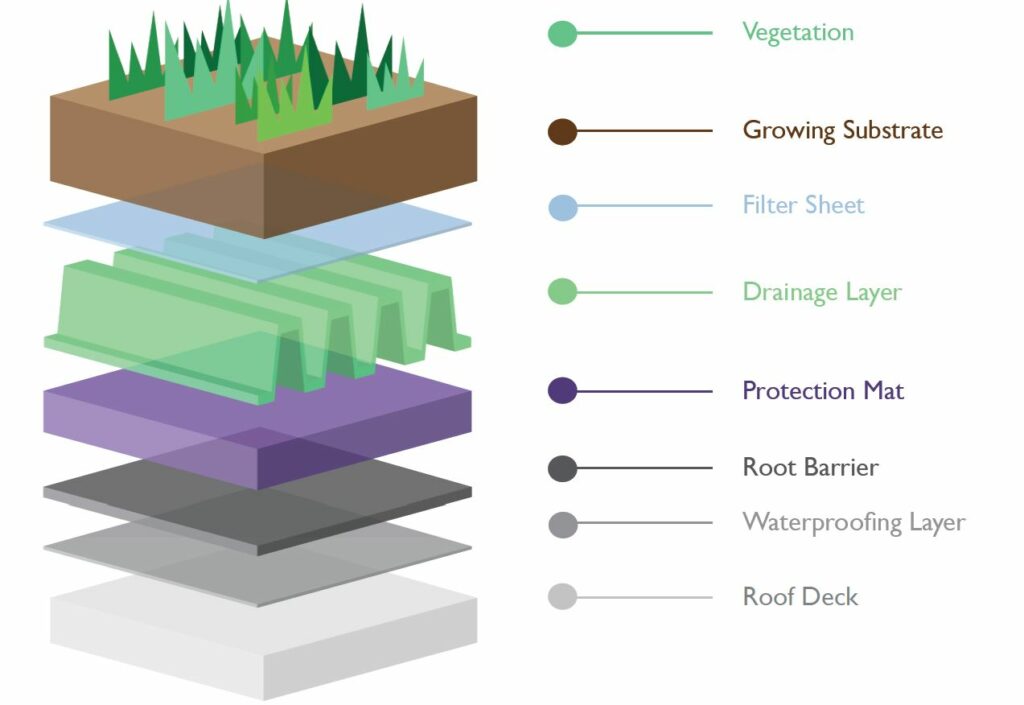
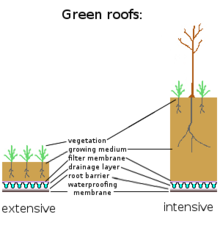
Pro’s and Con’s of a Green roof? Pro’s – Improve the drainage system, Increase the lifespan of the roof, Boosting thermal performance, Helping out the environment, Supporting wildlife habitats, Aiding air quality. Con’s – A greater expense than traditional roofs, Require extra maintenance, An increase in weight load
Membranes EPDM Rubber / Sika Sarnafil

EPDM – This is a polymer based, single-ply EPDM rubber roof membrane, fast and easy to install using cold-applied methods and water-based adhesives. Manufactured by Firestone in the U.S., EPDM sheet membrane has consistently proven high performance at every level all over the world in different climates. Available in 2 thicknesses: 045 grade (1.14mm) and 060 grade (1.52mm). Firestone RubberCover EPDM membranes are BBA certified and CE approved.
Sarnafil – Some of Britain’s best known buildings feature Sika Sarnafil roofs, and it is the system of choice for applications in education, commerce, retail, leisure, travel, and many other sectors. Since the 1960’s the performance and longevity of Sika Sarnafil roofs has been demonstrated in millions of successful applications worldwide.
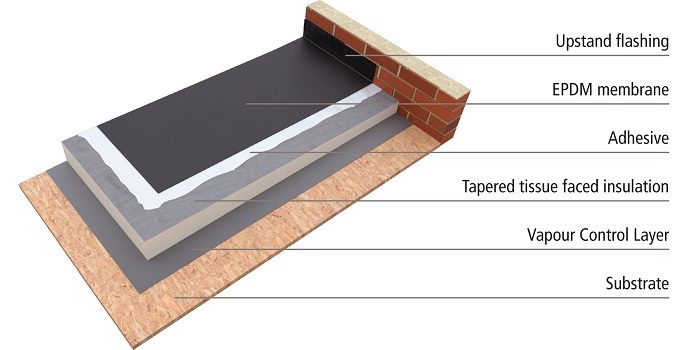
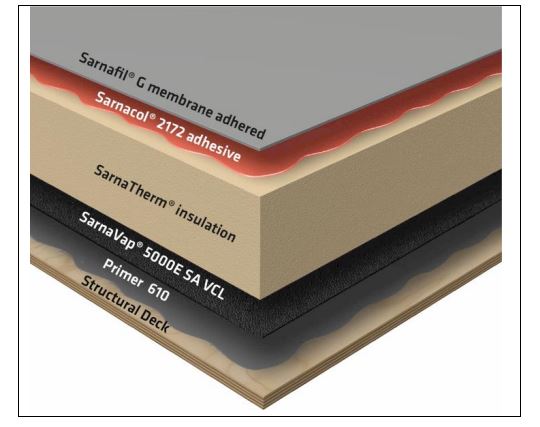
Please note we only install and guarantee EPDM and roofing.
Pro’s and Con’s of a Membrane roof? Pro’s – Strong, long lasting, Chemical Resistant, Fire Resistant, easy to maintain, easy to repair, long guarantee Con’s – A poor installation will look ugly! full of air bubbles. foot traffic punctures, not really for the DIY’er,on difficult shaped roofs in can be expensive.
Polyurethane Liquid Roofing
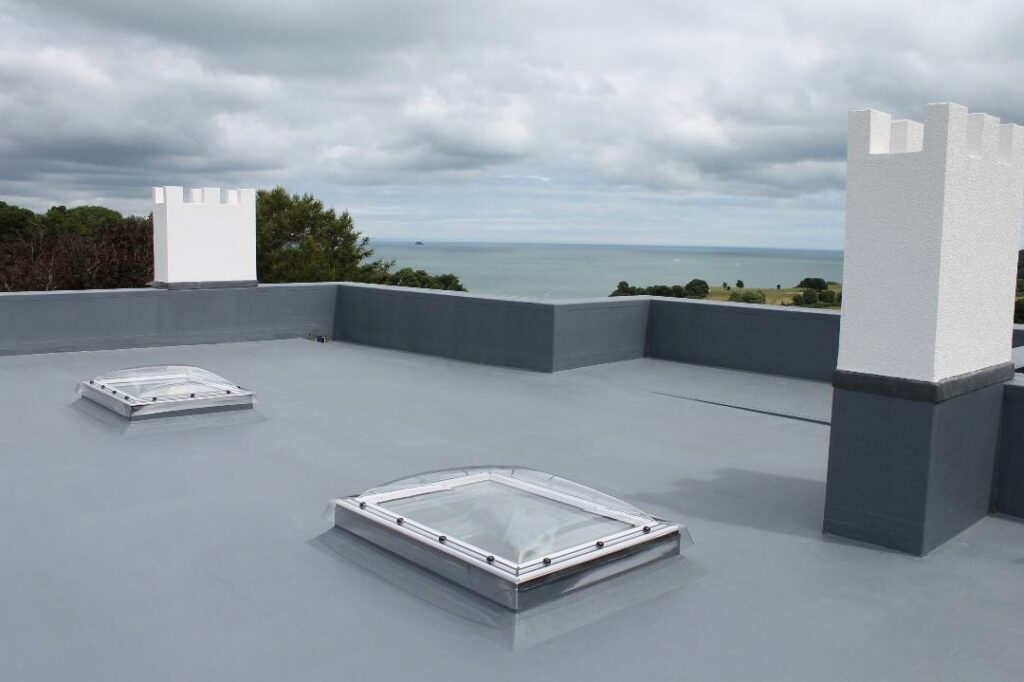
This is generally a cold application covering and can can be applied in 2 ways. 1) Spray on and 2) Hand applied
Liquid Rubber provides an extremely flexible, elastic and seamless layer that will stick to a wide range of substrates making it one of the most versatile products on the market in its category.
Spray on liquid rubber
A versatile spray applied liquid waterproofing system, made with a highly advanced eco-friendly polymer. Because of this, it has therefore become a renowned product within the construction industry. Its longevity and hard-wearing properties make it one of the most advanced, cost-effective waterproofing solutions available on today’s market.
A unique and advanced Instant Set Technology provides a seamless and fully bonded finish on contact with the surface and is almost immediately shower proof.
This spray-applied liquid waterproofing system is ideal for industrial and commercial projects because of its rapid application and instant curing.
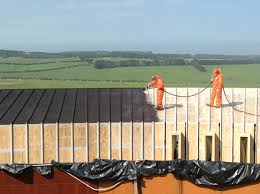
Hand applied liquid rubber
There a large number of products on the market for both the professional and the DIY’er. These roofs are easier to do but better left to the professionals.
Applied by hand with a brush, roller or spray. Can also be used on cracks in concrete and wall penetrations.
If done incorrectly the roof will leak getting the supporting deck wet, any attempt to reseal before drying will get the water trapped under the rubber. When it gets hot the water will try to escape leading to the rubber splitting
